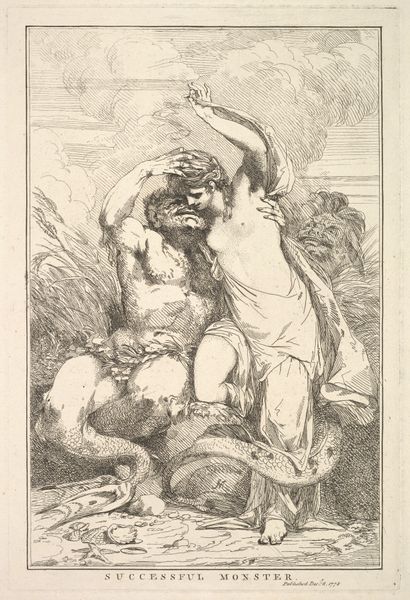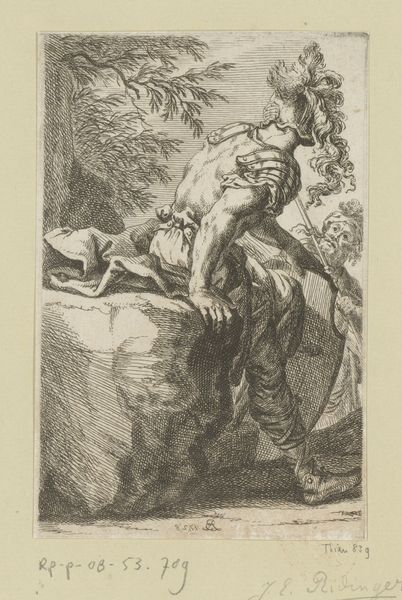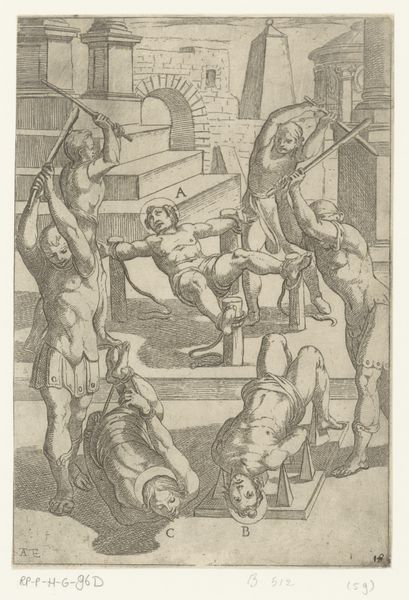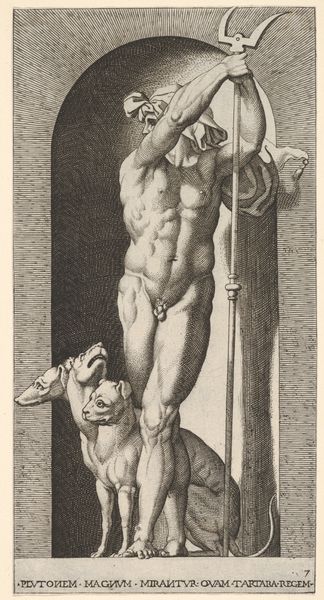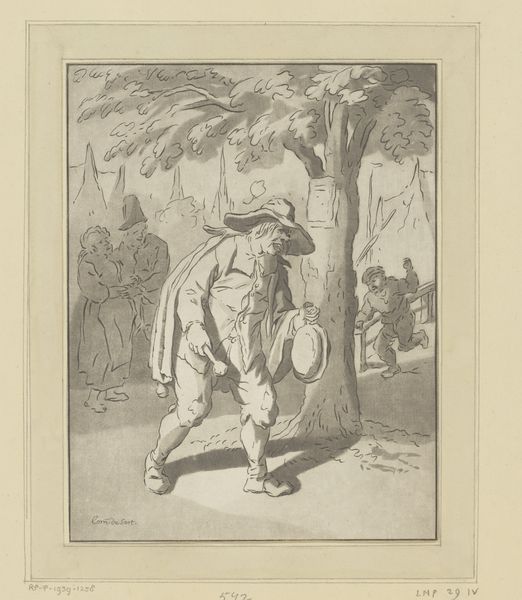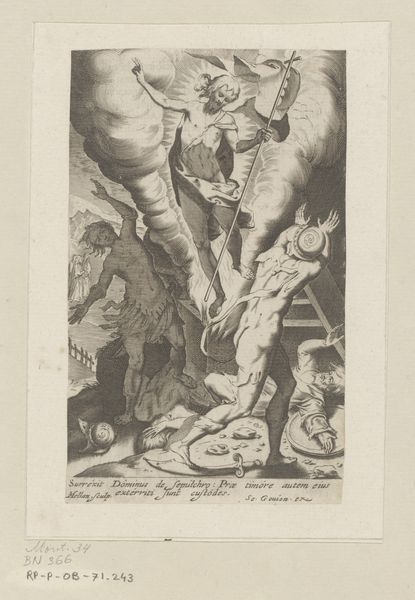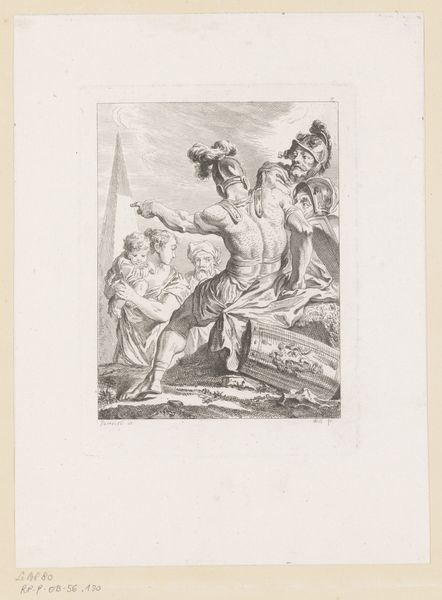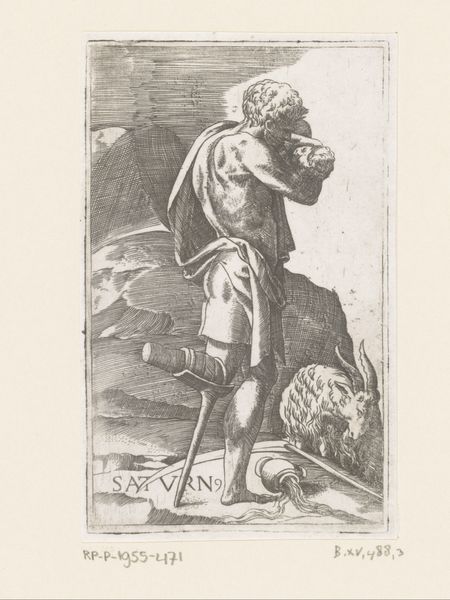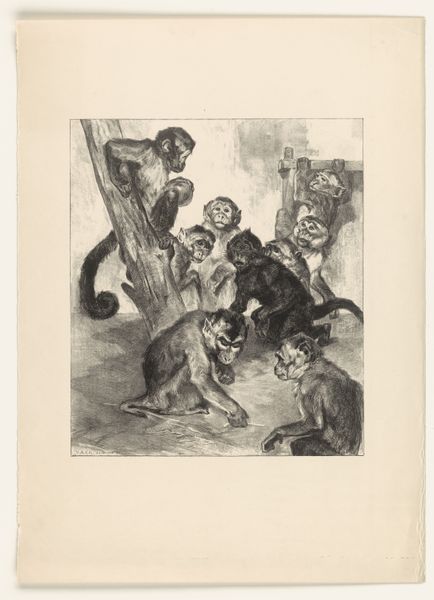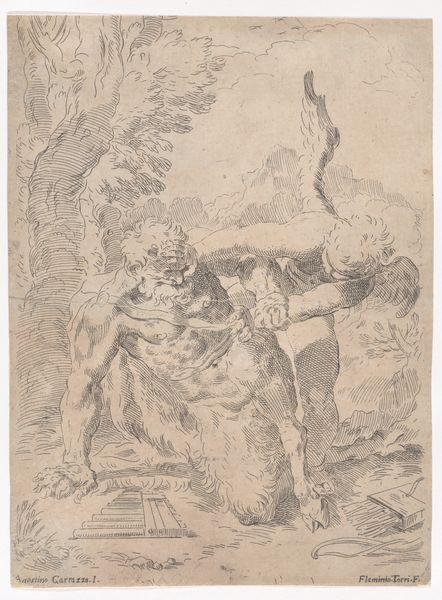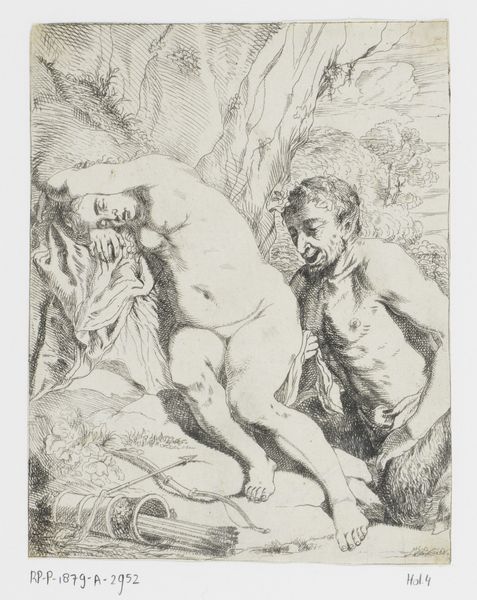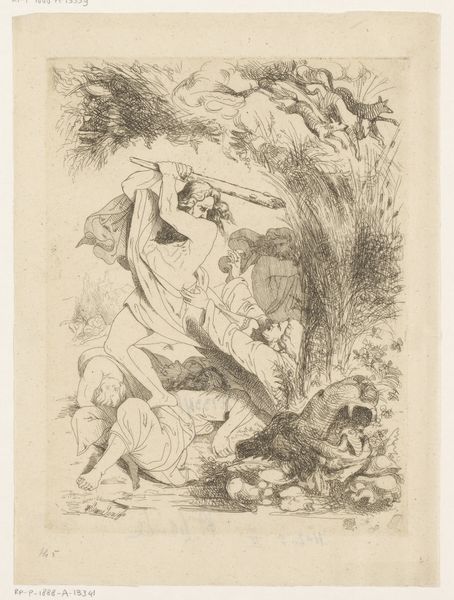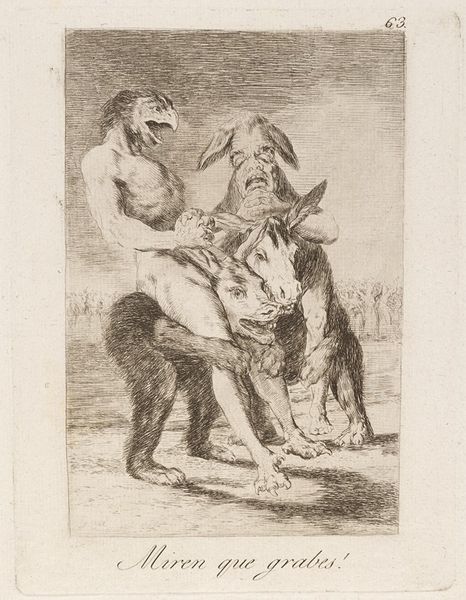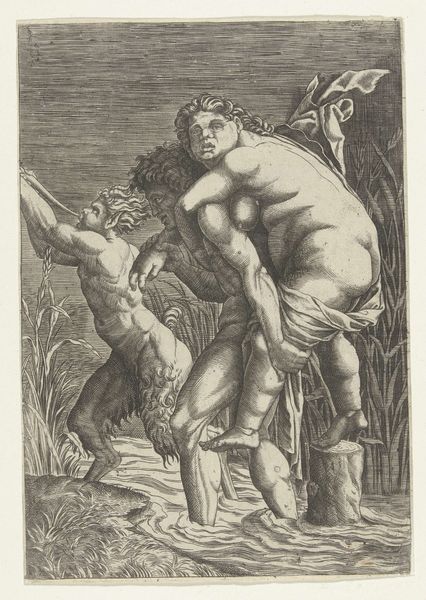
Dimensions: height 202 mm, width 130 mm
Copyright: Rijks Museum: Open Domain
This print, made by Nicolas Ponce around the turn of the 19th century, depicts Orlando capturing the ogre Orco. It’s made with etching and engraving, techniques that require skilled labor to incise lines into a metal plate, which is then inked and printed. Look closely, and you’ll see how the qualities of the etched line define the image. Notice, in particular, the figure of Orco; Ponce uses a web of closely-spaced lines to render the ogre’s skin. This kind of patterning could be done by a machine, but here, the labor is clearly manual, and quite intensive. We can only speculate on the working conditions of someone like Ponce, but printmaking was certainly a vital part of the period’s visual culture. These images were relatively cheap and widely disseminated. So, while we might think of this print as an artwork today, it was originally conceived as a means of mass communication. That's something to consider whenever we look at works on paper. They are never just about aesthetics. They are also about production, distribution, and access.
Comments
No comments
Be the first to comment and join the conversation on the ultimate creative platform.
